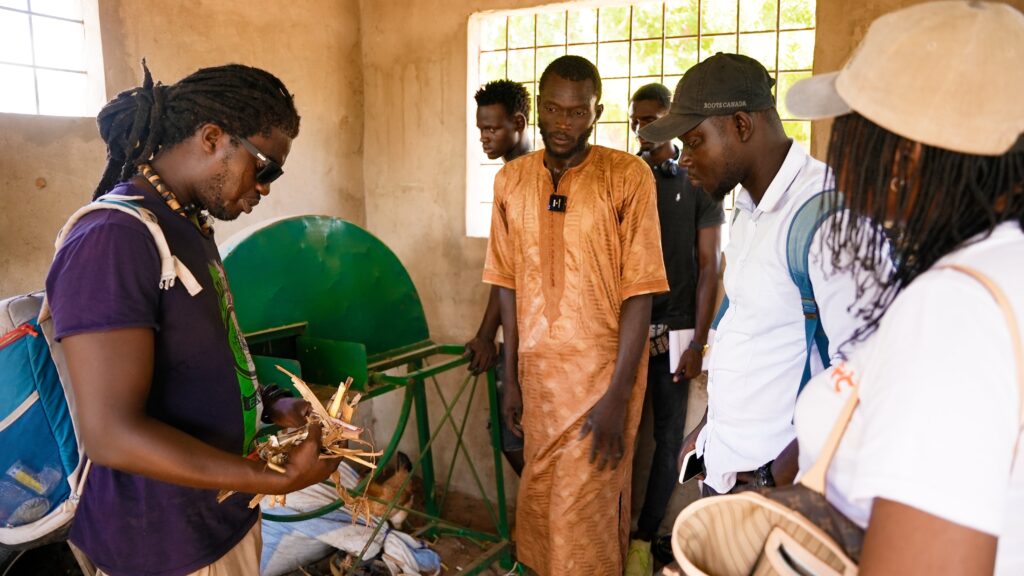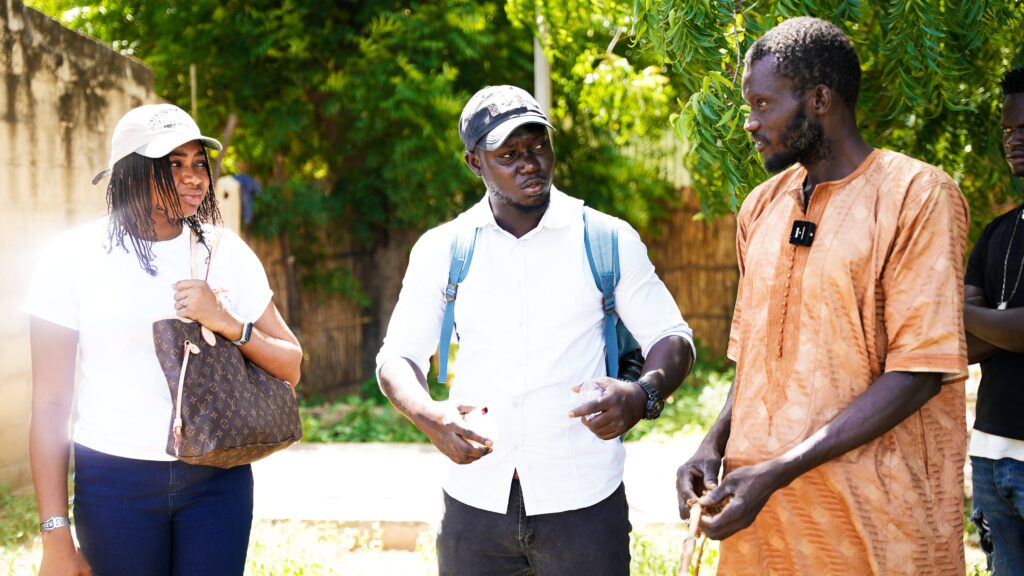In the agricultural village of Ndim in the department of Bambey, the farmers’ work has become much easier thanks to a machine, the chopper. Equipped with a blade to cut, a crank to move it and a rectangular metal frame on which rests the whole, the Chopper is a simple but robust tool, that requires little maintenance. The machine saves time, and energy while improving the quality of the harvested produce compared to the traditional machete.
Ndim is one of fifty-five villages in the township of Ngoy. The populations in that area are involved in agriculture and cattle breeding. The most profitable crops cultivated are groundnuts, millet, maize, sorghum, cowpeas, and others such as hibiscus (bissap), and watermelons. There, cattle food is of great economic interest as it is a revenue-generating activity. In the farmers’ agricultural activity, the straw or stalks generally constitute more than half of the plant. Although such roughage cannot be consumed by humans, it can be recycled as food for livestock. After harvesting their cereals, the village producers collect the straws and proceed to their grinding by tying them together into sets made of several stalks before placing them between large crushing stones. The drying process then follows for conservation as seen in the following illustration.

Traditionally, the producers did manual chopping using machetes. That took tremendous time and effort to process large quantities of straws. Today in Ndim, with the chopper, the time and physical work required has decreased considerably, according to users. After harvesting, the machine cuts the crops, and the straw stalks are collected and then used as livestock food. Because of the chopper, a surplus is generated and sold as additional income for the benefit of the farmers.
The chopper comes on time as the livestock food business is booming, and cattle feeding is made easier. According to the manager of the farmers’ association, livestock breeding is a sector that profits women. The chopper helps them greatly by facilitating cattle fattening in the likes of oxen that consume large quantities of food. Besides the increased output, the nutritional value of the chopped product has improved in comparison to manual chopping.
Although users advised on the advantages of the chopper in terms of time, energy input, and quality of the final product, according to them, the machine installed in the village two years ago by ISRA needs to be upgraded to improve its performance

In that perspective, on Thursday, October 27th, 2022, DAUST students travelled to the village of Ndim to meet the farmers. The meeting was a brainstorming and need assessment session to collect the impressions and requests from the farmers and to leverage the expertise of the DAUST engineering students to enhance the machine ‘s efficiency, safety, and manageability.
To cut using the chopper, the users take a set of dry stalks into the grinding wheel, cut off the tips that have no nutritional value, and place it in the mouth of the chopper, then a second person turns the crank in the rotative movement, and the blades cut the stalks into small pieces. The following images illustrate this
Although it is easy to use, the chopper has some disadvantages according to users. They complained of the lack of safety of the blades, the overall weight when moving it from site to site, and the fact that it is completely manual, when, in the area, people have access to motorized machinery such as peanut shelling machines, millet, and peanut threshers.
Also, the chopper usage is seasonal. Indeed, the machine does not function well when stalks are freshly harvested. The blades slip and do not cut thoroughly, and nutritional value is significantly reduced as well. For optimal usage, the machine forces the stocking of the stalk during a seven to eight months drying period before chopping. That is a huge disadvantage as cattle food-generating income is an all-year-long.
DAUST engineering students took note of all the farmers’ feedback and have already recommended solutions such as developing a trailer-mounted forage chopper based on the existing manual chopper but motorized with solar panels and batteries as energy source. This will be done as part of a USAID funded project, Appropriate-Scale Mechanization Consortium (ASMC) in partnership with Michigan State University and ISRA. The students will also look for ways in which the final product could be easily manufactured so it can be made available to all neighboring villages. The meeting was rich in exchanges and ideas. The young engineering team from DAUST is excited to implement their proposed solutions for the bettering of the lives of the farmers of Ndim.
This mission was led by Mr. Diop Madiama, Agricultural Machinist, and his team, joined by our DAUST students, Lassana Bathily, and Magatte Sylla.
Be A Daustian !



